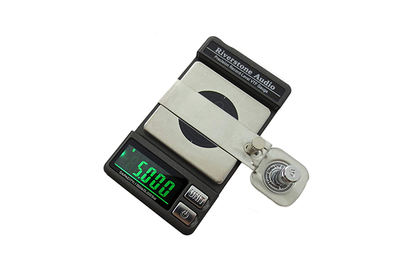
Why it’s helpful: Tracking force describes the amount of pressure the phono cartridge puts on your records. Too little force causes the cartridge to bounce and skip, while too much wears out your stylus and records too quickly. Different cartridges are designed to apply different amounts of tracking force, and you should make sure your turntable’s tonearm is set up to apply the correct amount for the cartridge you’re using, which is usually specified in grams somewhere in the owner’s manual. You accomplish this through the tracking-force adjustment, or counterweight, which may be a dial or a hanging weight on the tonearm.
How to do it: Most turntables include instructions on how to properly balance the tonearm to get the right tracking force. In most cases, you balance the tonearm in the air, set the counterweight dial to zero, and then set the dial to the correct setting. But with this simple method, it’s easy for the dial to move and apply too little or too much force, which can impact performance.
The most accurate way to adjust the tracking force is with a dedicated scale. Most of the digital scales I’ve tried either failed or weren’t reliable, but then I found this scale from Riverstone Audio, which works perfectly. The point at which the scale measures the tracking force is the same height as though a record were on the table, so it’s not too high or too low, which can affect the measurement. The Riverstone scale also includes two calibration weights so you can make sure it’s accurate, plus it comes with a storage box to keep it safe.





